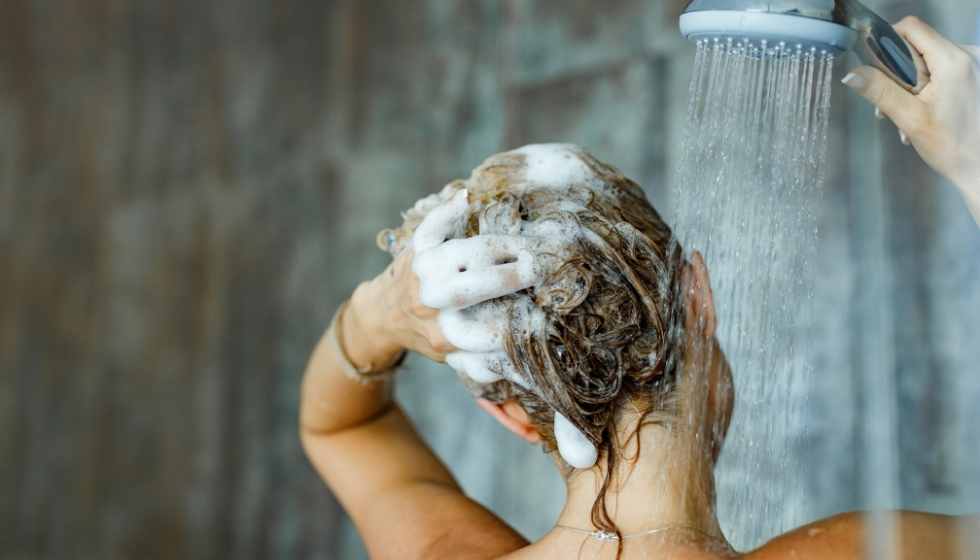It is believed that sulfates in shampoos can harm hair. We figure out if they are so dangerous and how they can be replaced.
On cosmetics bottles, you can increasingly find a list of substances that are not in the composition.
There are even special shampoos that do not contain sulfates. We learned from experts whether sulfates are so terrible and how sulfate-free shampoos can help.
What are Sulfate-Free Shampoos?
Sulfate-free shampoos are scalp and hair cleansers free of the most popular surfactant, sulfate. It is believed that they are much softer in effect and are better suited for dry and damaged hair.
What are sulfates? These are salts of sulfuric acid. Not all sulfates have the same properties. For example, calcium sulfate is used to make plastic, ferrous sulfate is a mineral food additive, and it is also used in fertilizers.
Magnesium sulfate (Epsom salt) is used in bath salt mixtures; sodium Laureth sulfate is known for forming a dense foam when combined with water, pushing out pollution.
He is most often added to shampoos and other detergents so that they foam well. In the description of the ingredients, it can be found as the abbreviation SLES or SLS.
Why did people avoid sulfates, which for many years helped to clean houses, clothes, and themselves? It is believed that in the early 1990s, information about the potential toxicity of this ingredient was misinterpreted, which led to a wave of rejection of the use of products with SLS.
Indeed, in the description of this substance, you can find a warning about possible skin irritation due to service. It is not recommended to swallow it; if it gets into the eyes, rinse them with running water.
However, the most severe accusation against sulfates is the potential carcinogenicity. In 1998, the American Cancer Society clarified this issue: it turned out that some studies were misinterpreted. Also, sulfates were considered the cause of baldness. Research shows that this is not the case.
The only thing you can blame sulfates for is that they can cause skin irritation. This is the reason for the popularity of sulfate-free shampoos, in which these compounds have been replaced with ingredients of plant origin.
“Sulfates SLS, ALS is used in detergents for dishes, floors, and other surfaces. Less harsh sulfates, such as SLES, are added to shampoos, shower gels, and even some baby shampoos.
But not everyone knows about the differences between them. From this came the opinion that all sulfates are harmful and there is no difference between dishwashing detergent and shampoo.
When creating sulfate-free shampoos, a substance is used that is synthesized from the fatty acids of coconut oil. Such shampoos can consist entirely of natural ingredients, which is ideal for sensitive scalps.
However, the biological component of the composition can cause allergic reactions. Also, sulfate-free shampoos are not always suitable for people who use styling products, as they do not wash out the silicone in their composition well.
Pros and Cons of Sulfate-Free Shampoos
Pros:
- Due to the mild effect, such shampoos do not wash off the protective fatty layer on the scalp. Therefore, there is no response in the production of additional sebum.
- Does not irritate sensitive skin.
- Do not damage the hair structure.
- Longer retain hair color after dyeing.
- They do not spoil the result obtained from salon procedures, such as keratin straightening, long-term styling, or hair botox.
- Nourishes the hair with the oils it contains.
Cons:
- They don’t foam well, and it’s difficult to distribute the shampoo through the hair.
- Consumption is much higher. To wash long hair, you will need more funds.
- Silicones and oils are poorly washed off. It is better not to use them after applying styling products or masks.
- They deprive the hair of volume and make the hair smooth.
- The effect of the shampoo may not be immediately visible. It will take several sessions for sulfate irritation to pass and for the hair scales to close.
When to Use Sulfate-Free Shampoos
- Sulfate-free shampoos are recommended for those who require gentle hair care in case of the exceptional sensitivity of the hair or scalp.
- When there is a need to maintain the effect of Botox for hair, keratin straightening, or lamination. During these procedures, the scales along the length of the hair are sealed.
- Sulfates, with their aggressive action, can open them. Therefore, using sulfate-free shampoos can prolong the effect of salon care.
- If gentle care is required for colored or bleached hair. Using sulfate-free products will help keep the color longer.
- If you experience discomfort after washing your hair, the skin itches and pimples appear in the hair growth zone; this is a reaction to sulfates. In this case, the sulfate-free shampoo will help.
If you have curly hair. Usually, they are scorched and complex, and additional drying harms them: the hair is curly. It does not hold an elastic curl well.
The so-called curly styling method is based on the use of sulfate-free products.
Sulfate-Free Shampoos and Oily Hair
The main contraindication to the use of sulfate-free shampoo is an oily scalp. However, with overdried skin, excessive sebum secretion can just begin as a protective reaction. In this case, sulfate-free products are worth trying to soothe the skin and normalize the sebaceous glands.
Peeling when overdrying the skin is often confused with dandruff. If, in the first case, the exclusion of sulfates will help, then with dandruff and seborrheic dermatitis, the sulfate-free shampoo will not do anything.
How to Use Sulfate-Free Shampoos
The fundamental difference in using a sulfate-free product compared to a regular shampoo is that the first one will need more.
- Apply the shampoo to the scalp and distribute it along the length of the hair. In the case of regular shampoo, the lather running down the hair would clean the ends. But sulfate-free shampoo almost does not foam, so it must be applied to the entire length.
- Leave the shampoo on your hair for 2-4 minutes.
- Wash off with plenty of water.
- Reapply if heavily soiled.
- Complete your cleansing routine with products that suit your hair type. It can be a balm, conditioner, or mask.
How to Choose a Sulfate-Free Shampoo
- Look for a remedy among familiar brands that you trust.
- It must not contain SLS, SLES, or SODIUM LAURYL SULFATE.
- Choose a shampoo for your hair type and scalp.
- Pay attention to specifics. Perhaps you want to achieve the effect of volume or hair needs additional nutrition.
- Don’t forget to buy a sulfate shampoo if you use styling products or get very dirty.


